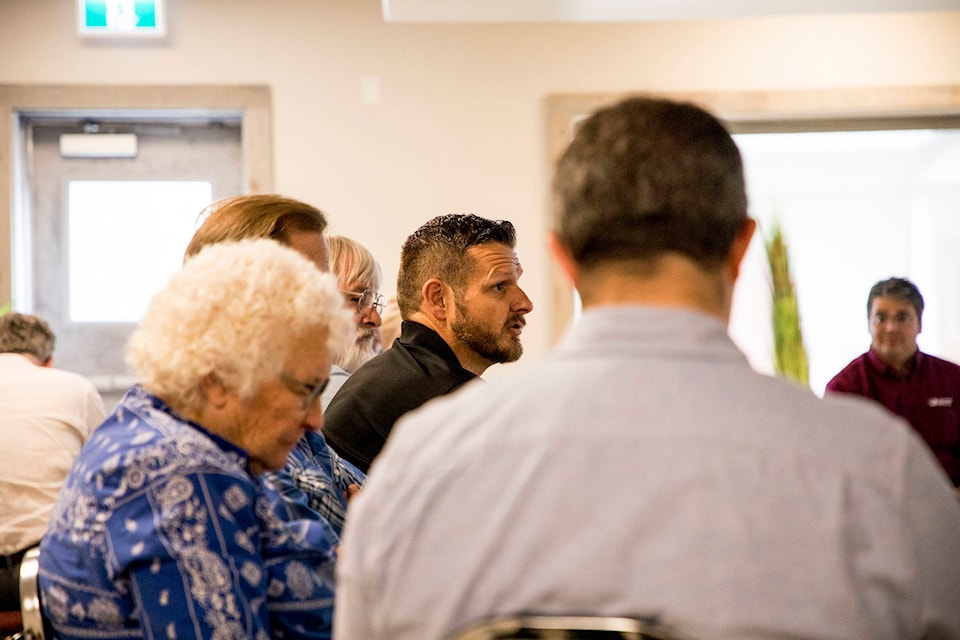Vanderhoof Omineca Express got in touch with Andrew Czornohalan, operations director at Rio Tinto to talk about the current state of the Nechako Reservoir and more.
What is the current state of the Nechako reservoir?
As of June 7, 2019 the water level in the Nechako Reservoir is about 2793 feet, or 7 feet from full, which is 2 feet lower than normal for this time of year. In addition, the snowpack in the reservoir area is almost already melted and inflow to the reservoir has dropped. It seems that the peak of the freshet has passed.
‘Dryest year ever’ - can you explain this further and provide some statistics to compare over previous years.
Inflow refers to the water going into the Nechako reservoir from melting snow and rainfall. Inflows between July 1, 2018 and June 4, 2019 has been the second lowest since 1956. Rainfall in the last two weeks has helped increase the inflows to the reservoir which has made a slight difference to the reservoir level.
How is the Dam managed if water level goes below the desired level?
The risk of water surplus and water shortage is constantly managed. Decisions related to flood risk or drought risk mitigation occur many months in advance of any potential event by either discharging additional water, or curtailing power generation. However, risk levels can change quickly from weather events so conditions are continually monitored. We are evaluating options and will take steps this year to mitigate even lower levels in the spring next year, before the 2020 freshet.
What kind of engagement is being done with local governments? Considering Vanderhoof council’s stance on wanting a seat at the table while decisions are being made, is that being taken into consideration?
Rio Tinto began the Water Engagement Initiative as a means of collaborating with First Nations, members of the public and governments in the Nechako Region. The spirit and intent of the Water Engagement Initiative is to facilitate an understanding of the diverse interests related to water management in the Nechako Region, and collaborate with interested parties/persons in identifying opportunities for improvement in Rio Tinto operations. The process is supported by an independent facilitator, and a technical working group. All levels of government and First Nations were invited to help design the process and to participate. Rio Tinto encourages anyone interested in the Nechako River, and Rio Tinto’s operation of the reservoir, to participate in the Water Engagement Initiative process.
What kind of engagement is being done with First Nations groups?
All First Nations in the watershed have been contacted and encouraged to participate in the Water Engagement Initiative. Rio Tinto encourages anyone interested in the Nechako River, and Rio Tinto’s operation of the reservoir, to participate in the Water Engagement Initiative process.
Heard at a previous council meeting that BC Hydro is going to be involved in a project. What is the nature of the project?
The electricity generated at Kemano is an integral part of the BC Hydro system. BC Hydro and Rio Tinto work very closely together at all times to ensure a reliable supply of electricity in northwest BC. Currently, BC Hydro and Rio Tinto are investigating the best options for mitigating the risk of low water, to ensure there is enough electricity to BC Work’s smelter if low water levels continue.
Considering its the dryest year on the record, what should Vanderhoof residents expect in terms of water levels?
Rio Tinto is required to discharge water from the Nechako Reservoir for fisheries Conservation in the Nechako River. Spillway discharge will follow the normal schedule. Although it is possible that flows from tributaries may be lower than usual, residents should expect water levels to be at normal levels for this time of year and during the fisheries season.
What was the snowpack level this year in comparison to other years?
The total snowpack in the Reservoir area was about 70% of the average for the winter. Up until January it was quite typical then through February & March the levels were virtually flat. The snow melt started very early in late April / early May.
I had spoken to someone in regard to the Nechako river and they have seen it change over a period of time. They said they have brought up these concerns, so this engagement seems redundant. Why haven’t those changes been done before?
There are a couple of different reasons - if we implement one interest it may have a detrimental impact on something else and it is very difficult for our company to say how do we weigh bank erosion with flood protection and salmon stocks. So that is something as a company that has been very difficult. The other thing is our flow regime is part of a regulatory process. So we have had to get the province on board so that we all move together. I feel all of us - regional, provincial, federal and local, all of us can move together towards a decision. If there is just one group trying to push it, you either get stuck in bureaucracy or stuck in opposition.
Aman Parhar
Editor, Vanderhoof Omineca Express
aman.parhar@ominecaexpress.com
Like us on Facebook and follow us on Twitter
